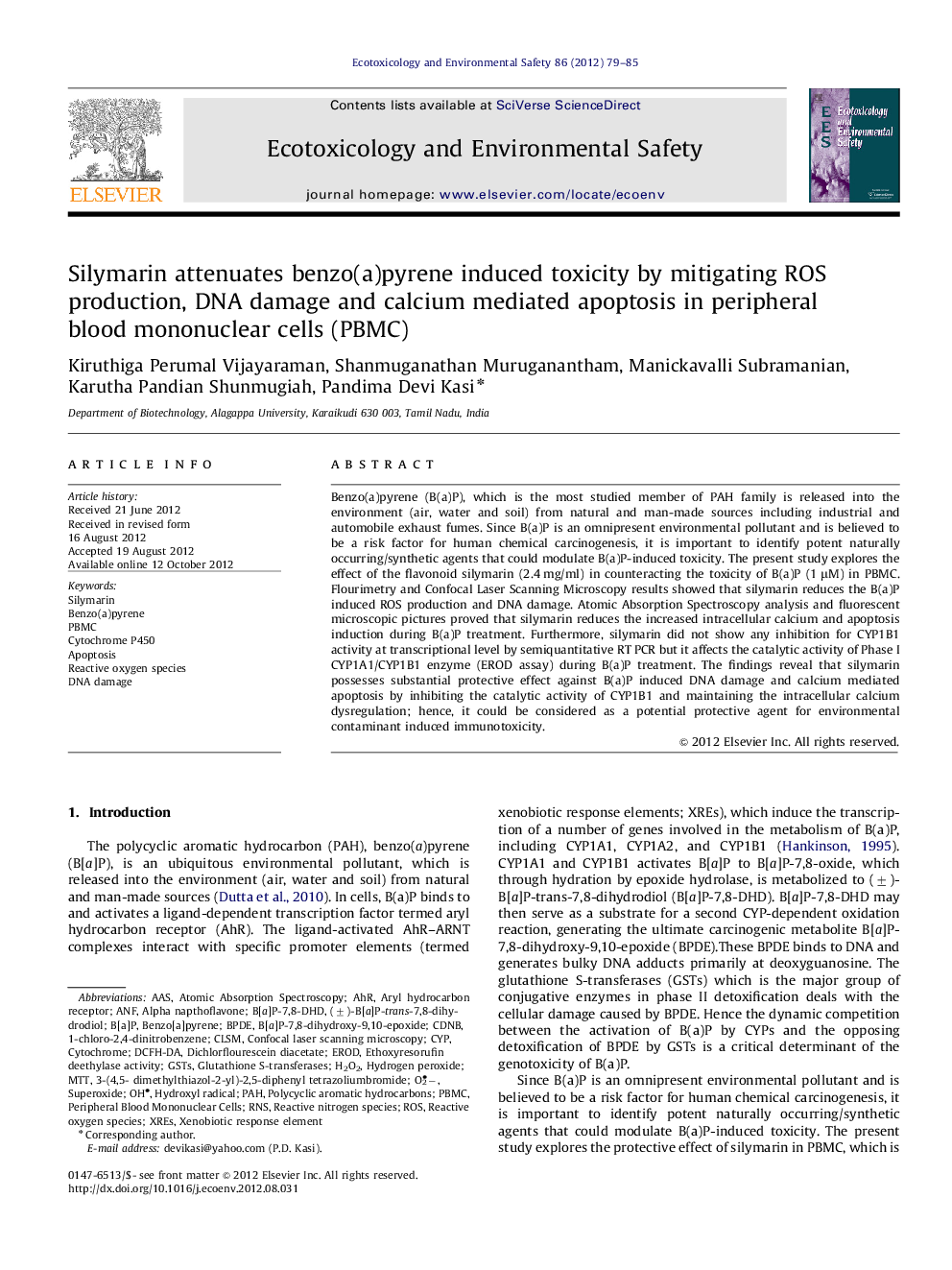| Article ID | Journal | Published Year | Pages | File Type |
|---|---|---|---|---|
| 4420547 | Ecotoxicology and Environmental Safety | 2012 | 7 Pages |
Benzo(a)pyrene (B(a)P), which is the most studied member of PAH family is released into the environment (air, water and soil) from natural and man-made sources including industrial and automobile exhaust fumes. Since B(a)P is an omnipresent environmental pollutant and is believed to be a risk factor for human chemical carcinogenesis, it is important to identify potent naturally occurring/synthetic agents that could modulate B(a)P-induced toxicity. The present study explores the effect of the flavonoid silymarin (2.4 mg/ml) in counteracting the toxicity of B(a)P (1 μM) in PBMC. Flourimetry and Confocal Laser Scanning Microscopy results showed that silymarin reduces the B(a)P induced ROS production and DNA damage. Atomic Absorption Spectroscopy analysis and fluorescent microscopic pictures proved that silymarin reduces the increased intracellular calcium and apoptosis induction during B(a)P treatment. Furthermore, silymarin did not show any inhibition for CYP1B1 activity at transcriptional level by semiquantitative RT PCR but it affects the catalytic activity of Phase I CYP1A1/CYP1B1 enzyme (EROD assay) during B(a)P treatment. The findings reveal that silymarin possesses substantial protective effect against B(a)P induced DNA damage and calcium mediated apoptosis by inhibiting the catalytic activity of CYP1B1 and maintaining the intracellular calcium dysregulation; hence, it could be considered as a potential protective agent for environmental contaminant induced immunotoxicity.
Graphical abstractThe proposed mode of action of silymarin against B(a)P induced toxicity in PBMC. [The symbol ⊥ denotes inhibition of the assessed parameters by silymarin].Figure optionsDownload full-size imageDownload as PowerPoint slideHighlights► Effect of silymarin in counteracting the toxicity of B(a)P in PBMC was explored. ► Silymarin attenuated ROS, DNA damage, intracellular Ca2+ and apoptosis. ► No inhibition observed for CYP1B1 activity at transcriptional level by RT PCR. ► Catalytic activity of Phase I CYP1A1/CYP1B1 enzyme (EROD assay) was affected. ► Silymarin possesses substantial protective effect against B(a)P induced toxicity.
